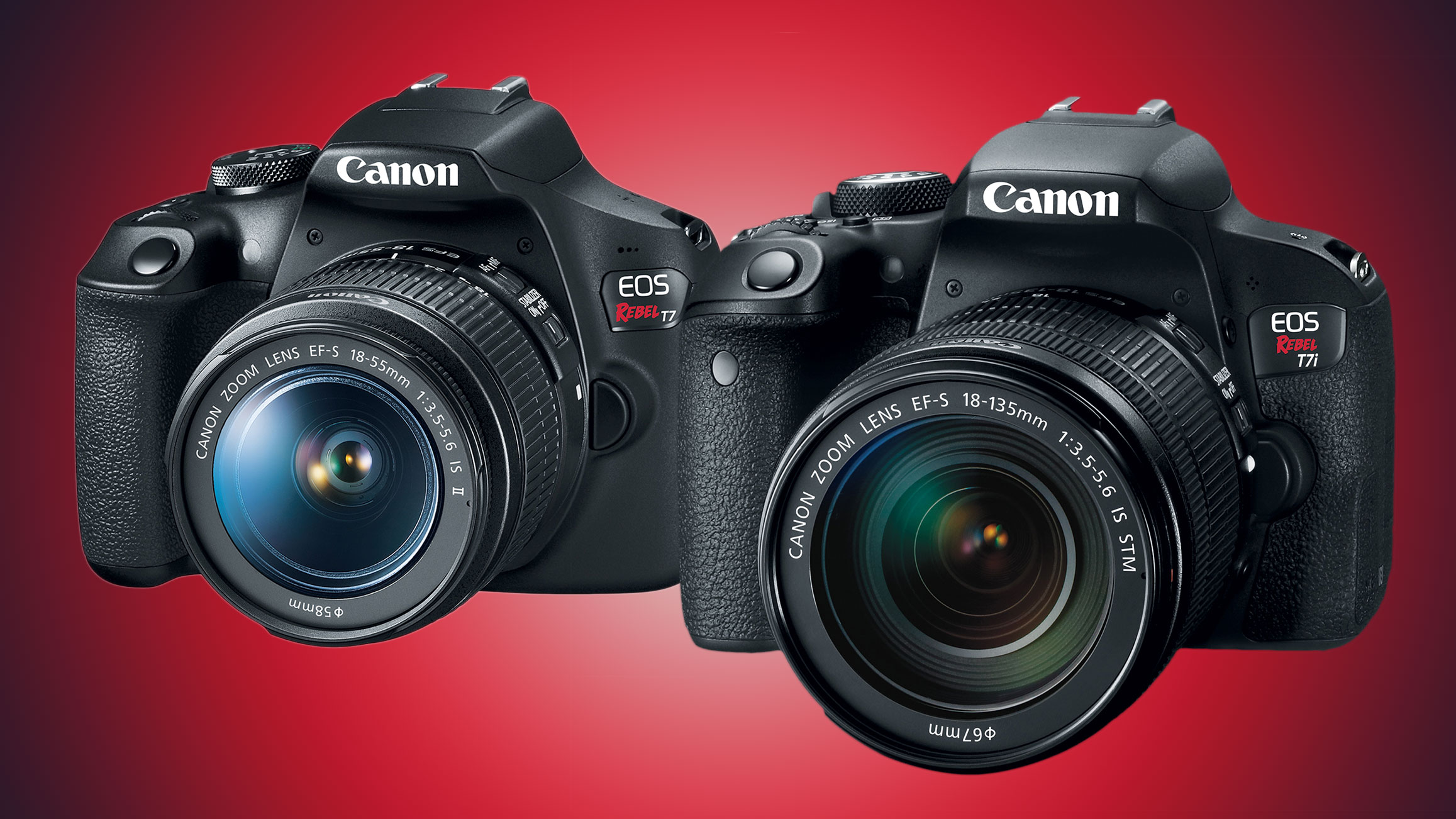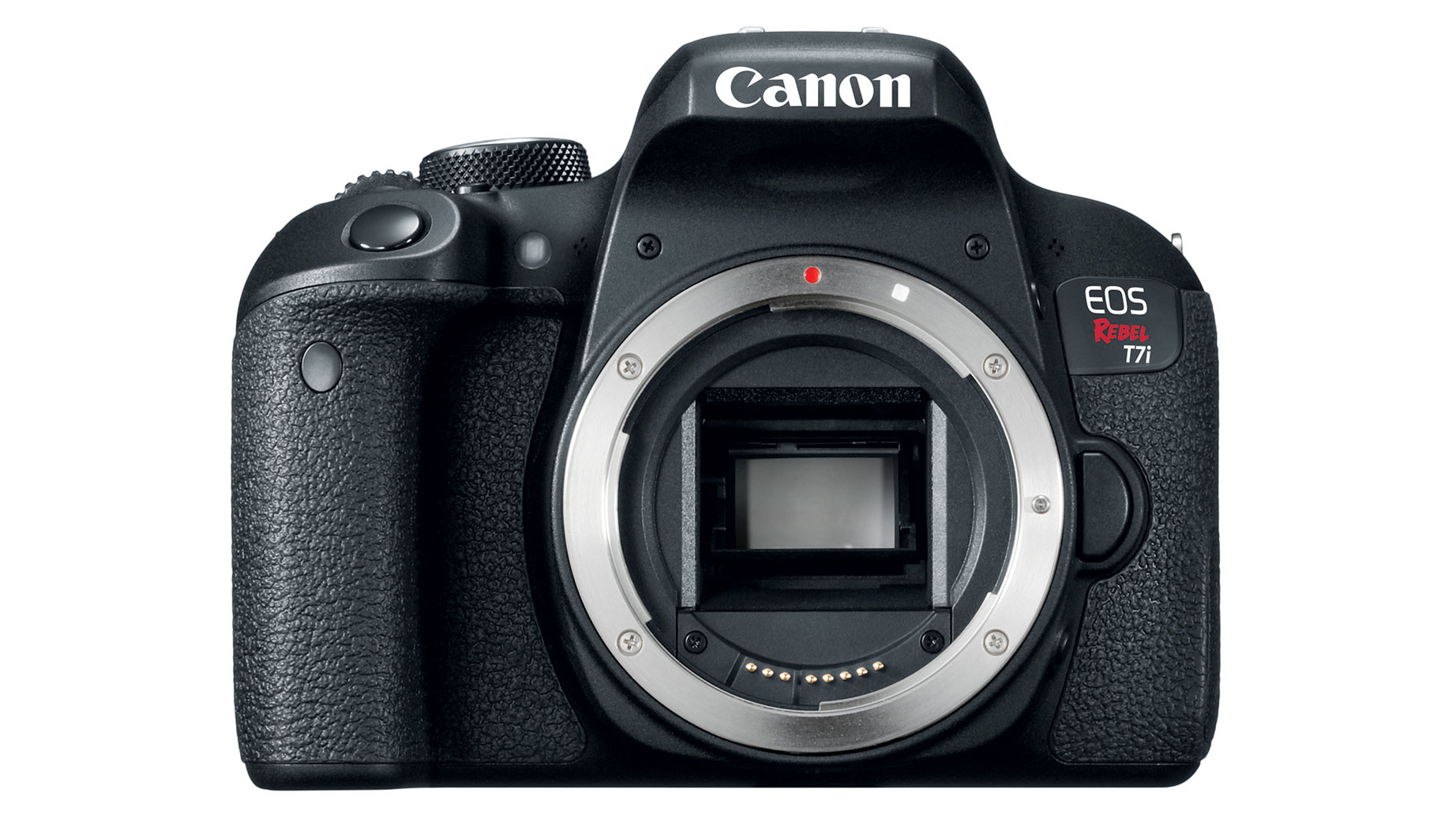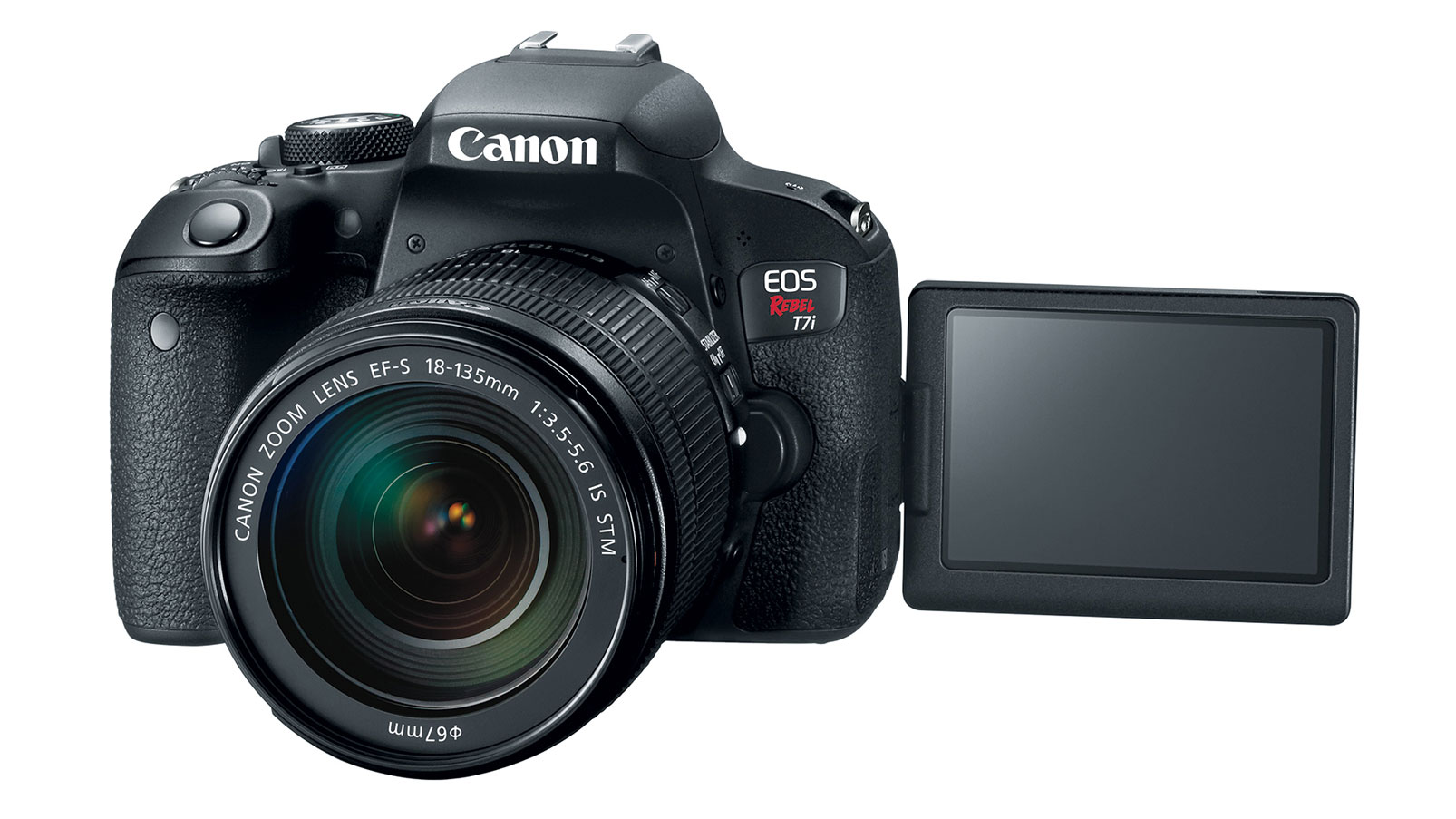Canon EOS Rebel T7 vs T7i: which of these beginner DSLRs is best to get?
While their names are very similar, there are some key differences that set the Canon Rebel T7 and T7i apart

Also known as the Canon EOS 2000D and the 800D respectively, the Rebel T7 and T7i sit in Canon’s entry-level DSLR range aimed at novice photographers and those looking for a relatively compact camera with a mirror.
The two cameras were launched just a year apart with the Rebel T7i coming first in February 2017. They both have a 24Mp APS-C format sensor and Canon’s EF-S lens mount which makes them directly compatible with a huge range of EF-S and EF lenses. However, there are some significant differences between the two models that could make one more attractive than the other, so let’s take a look at how they compare.
Both are still available, depending on the retailer, but note that the Rebel T7i has now been replaced by the superior Rebel T8i (EOS 850D).
1. Sensor and processor

• Canon EOS Rebel T7: 24.1Mp APS-C format (22.3 x 14.9mm) CMOS, Digic 4+
• Canon EOS Rebel T7i: 24.2Mp APS-C format (22.3 x 14.9mm) CMOS, Digital 7
In terms of resolution, the Rebel T7 and T7i are near enough identical so they produce the same size images and each is capable of recording plenty of detail. However, the T7’s sensor is paired with the Digic 4+ processing engine whereas the T7i has the newer Digital 7 processor. This gives the T7i an advantage for overall speed and responsiveness as well as noise handling as it can cope with more sophisticated noise reduction algorithms.
2. Sensitivity (ISO)
• Canon EOS Rebel T7: ISO 100-6400 expandable to ISO 12,800
• Canon EOS Rebel T7i: ISO 100-25,600 expandable to ISO 51,200
Aided by its more advanced processing engine, the T7i has standard sensitivity range of ISO 100-25,600 for stills, which is two stops more than the T7. In video mode the T7i’s range is ISO 100-12,800, expandable to ISO 25,600, one stop more than the T7’s range. This makes the Rebel T7i more versatile and generally better in low light.
It’s also helpful that the T7i’s sensitivity setting can be adjusted in 1/3EV steps whereas the T7 only allows whole stop adjustments.
3. Viewfinder AF system
• Canon EOS Rebel T7: 9 points: 1 f/5.6 cross type at the centre
• Canon EOS Rebel T7i: 45 points: 45 f/5.6 cross-type AF points, 27 f/8 points (9 cross-type), centre point is f/2.8 sensitive and f/5.6 dual cross-type
With 45 cross-type AF points, the Rebel T7i is streets ahead of the T7 with respect to the focusing system that’s available when the viewfinder is used to compose images. As well as enabling you to target the subject more precisely, those 36 extra points mean that the T7i is better at tracking a subject around the frame. Cross-type points are also more sensitive than the standard linear points so the T7i is better at latching onto a subject.
4. Live View AF system
• Canon EOS Rebel T7: Contrast detection
• Canon EOS Rebel T7i: Phase detection using Dual Pixel CMOS AF technology
Again the T7i distinguishes itself from the T7, this time with its phase detection AF system that’s available in Live View and video mode. This is faster and more decisive than the T7’s contrast detection AF system. It also enables the camera to automatically select from 49 AF points or for the photographer to manually select a zone or individual point for focusing by tapping on the screen.
The T7 can use its viewfinder-oriented phase detection AF system in ‘Quick Mode’ but this involves interrupting the Live View feed by flipping the mirror so it isn’t actually that quick.
5. Screen

• Canon EOS Rebel T7: Fixed 3-inch 921,000-dot TFT LCD
• Canon EOS Rebel T7i: Vari-angle 3.2-inch 1,040,000-dot Clear View II TFT touchscreen
Whereas the T7i has a screen that is touch-sensitive and can be flipped out, twisted and angled to give clear view above or below head-height, or even rotated to face forwards, the T7’s screen is fixed and not touch sensitive. It means that you can only control the camera using the buttons and dials rather than taking more intuitive touch control. Also, if you’re composing the image in Live View mode with the T7, you can’t angle the screen for a clearer view if the camera’s not at eye-level.
6. Video
• Canon EOS Rebel T7: 1920 x 1080 at 30/25/24 fps
• Canon EOS Rebel T7i: 1920 x 1080 at 59.94/50/25/23.98fps
Neither of the cameras under scrutiny here is capable of recording 4K video, they top out at Full-HD (1920 x 1080) resolution. However, the T7i provides a greater range of frame rates, including 59.94fps for slow motion playback.
The T7i’s phase detection AF system also gives it an advantage in video mode as it’s better at finding and following moving subjects.
7. Battery life
• Canon EOS Rebel T7: 500 images using the viewfinder
• Canon Rebel T7i: 600 images using the viewfinder
Canon supplies the LP-E10 rechargeable Li-ion battery and charger with the T7 while the T7i comes with the LP-E17 rechargeable Li-ion battery and charger. In standard testing conditions at 23°C, the T7’s battery lasts for around 500 images when the viewfinder is used, which is decent performance, but the T7i’s enables up to around 600 images to be captured in the same conditions. If you’re a prolific shooter or you make regular use of Live View which more than halves the battery life, you’ll likely still want a spare battery or two, but the T7i is a safer bet for all-day shooting.
8. Interface
• Canon EOS Rebel T7: Standard interface
• Canon EOS Rebel T7i: Standard or Guided interface
The menu structure and interface of the Rebel T7 will be familiar to anyone who has used a Canon DSLR in recent times and it has a logical arrangement. The T7i, however, offers a choice of two interfaces, the Standard version seen on the T7 and the Guided mode that is designed to help novice photographers take control over the camera by explaining what features do in non-photographic terms. Straight from the box, the T7i comes with the Guided mode selected, but it’s easy to switch to the Standard mode if you prefer.
Canon EOS Rebel T7 vs T7i: conclusions

While it’s a year older than the T7, the T7i has a significantly more rounded feature set. Naturally, that means that the T7i is more expensive but aspects such as the vari-angle touchscreen, phase detection focusing in Live View and video mode, the wider sensitivity (ISO) range and greater battery life add up to make it a more versatile and satisfying camera if you can afford the extra expense.
How we test cameras
Why you can trust Digital Camera World
We test mirrorless and DSLR cameras both in real-world shooting scenarios and in carefully controlled lab conditions. Our lab tests measure resolution, dynamic range and signal to noise ratio. Resolution is measured using ISO resolution charts, dynamic range is measured using DxO Analyzer test equipment and DxO Analyzer is also used for noise analysis across the camera's ISO range. We use these real-world testing and lab results to inform our comments in buying guides. For compact cameras and phones, we judge on real world handling and photographic results alone.
Get the Digital Camera World Newsletter
The best camera deals, reviews, product advice, and unmissable photography news, direct to your inbox!
Angela has been testing camera gear from all the major manufacturers since January 2004 and has been Amateur Photographer’s Technical Editor and Head of Testing for Future Publishing’s photography portfolio (Digital Camera Magazine, PhotoPlus: The Canon Magazine, N-Photo, Practical Photoshop, Photography Week and Professional Photography magazines, as well as the Digital Camera World and TechRadar websites). She is the founder of SheClicks - a community group that encourages and supports female photographers.

